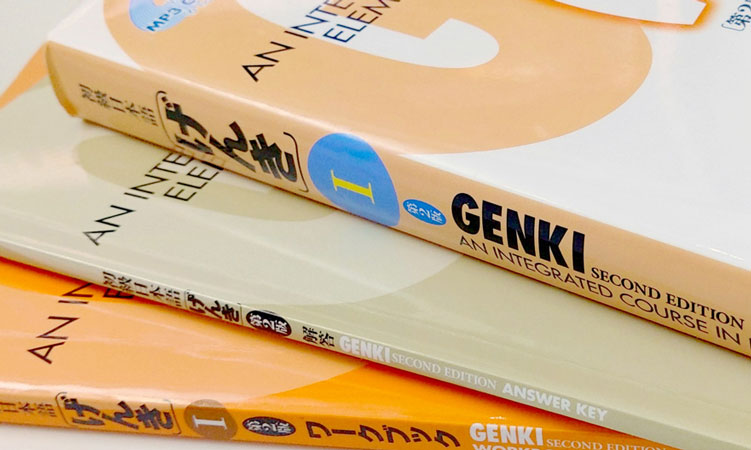JLPT means the Japanese Language Proficiency Test (??????? or Nihongo n? ryoku shiken a.k.a Noken in Japanese). JLPT exam is the official Japanese level exam, similar to the IELTS, TOEFL, or TOEIC exam in English. The JLPT has five levels: N1, N2, N3, N4, and N5. The N5 level is the easiest level and N1 is the most difficult level. To work in Japan, the minimum requirement of Japanese language skills is mostly JLPT N2 level. So, if you’re just starting to learn the Japanese language, you should start with JLPT N5 level.
There are hundreds of websites, books, and web applications to learn the Japanese language. Also, different types of learners need different types of books. So, finding the right book to start with is a little difficult. In this article, we would like to explain the list of best books to prepare JLPT N5 Examination.
If you are in a hurry, you can use the table below to buy the books with a quick click. The table is the summary of the different books described in this article. Based on our study, we concluded that-
– The best textbook – Complete set of Minna no Nihongo Shokyu 1 Honsatsu (Everyone’s Japanese Beginner 1 Textbook] 2nd Edition and Minna no Nihongo Shokyu 1 (Everyone’s Japanese Elementary 1 Translation & Grammar Notes) 2nd Edition
– The best kanji book – Kanji Look and Learn
– JLPT Official questions book – Japanese Language Proficiency Test (JLPT) Official Questions book N5
Top 6 books to pass the JLPT N5 level examination
1. Minna no Nihongo Shokyu 1 Honsatsu (Everyone’s Japanese Beginner 1 Textbook] 2nd Edition
2. Minna no Nihongo Shokyu 1 (Everyone’s Japanese Elementary 1 Translation & Grammar Notes) 2nd Edition
3. GENKI: An Integrated Course in Elementary Japanese I [Third Edition]
4. Kanji Look and Learn
5. Kanji Tamago (Beginner)
6. Japanese Language Proficiency Test (JLPT) Official Questions book N5
Here are the details of each book listed above-
1. Minna no Nihongo Shokyu 1 Honsatsu (Everyone’s Japanese Beginner 1 Textbook] 2nd Edition
The original name of the book: ?????????? ??? ??
Language: Japanese
Number of Pages: 249 (+ additional 55 pages book & 1CD)
Edition: 2nd Edition
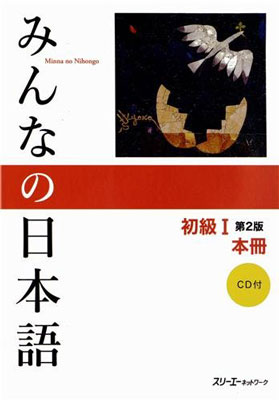
The Minna no Nihongo book is considered the main textbook by most teachers and students. This is a great book to pass the JLPT N5 examination. If you buy this book with the 2nd book on our list (grammar book) this book is a great choice to learn Japanese.
This book is one of the most widely used Japanese language textbooks for classrooms worldwide. Students learn and retain lesson material, including fundamental grammar, vocabulary, listening, and speaking skills, through situational daily discussions. For novices who have only spent a few hours studying Japanese, this “Shokyu 1” is crucial. The current version of “Minna no Nihongo Shokyu 1 Honsatsu” is the second edition. Conversational settings and vocabulary have been updated. Additionally, the book now comes with a CD containing the conversations and activities, and the number of pictures has been enhanced for study purposes.
However, this book is a little challenging for beginners without the guidance of someone, especially if you’re studying independently. The accompanying grammar book includes a description of the text as well as pedagogical theory, chapter translations, vocabulary lists, and thorough grammar explanations for all of the text’s points. In essence, it’s half of the textbook. This book does not have lots of illustrations as it is written for adults.
2. Minna no Nihongo Shokyu 1 (Everyone’s Japanese Elementary 1 Translation & Grammar Notes – English) 2nd Edition
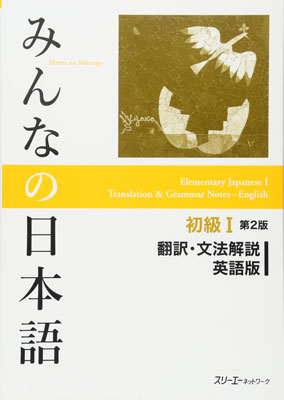
This book is an essential book with the number 1 on our list. This book covers grammar and vocabulary. If you study this book carefully, you can expect to answer all of the vocabulary of the real exam.
According to the author of the book, The Minna no Nihongo book is aimed at anyone who urgently needs to learn to communicate in Japanese in any situation, whether at work, school, college, or in their local community. Although it is an introductory text, efforts have been made to make the exchanges between Japanese and foreign characters in the book reflect social conditions and everyday life as faithfully as possible. Minna no Nihongo book comes with a CD containing the audio of problems/ conversations.
As mentioned in the above paragraph, the Minna no Nihongo book is considered the main textbook globally, therefore we recommend buying this book and read carefully before the JLPT N5 examination.
3 . GENKI: An Integrated Course in Elementary Japanese I [Third Edition]
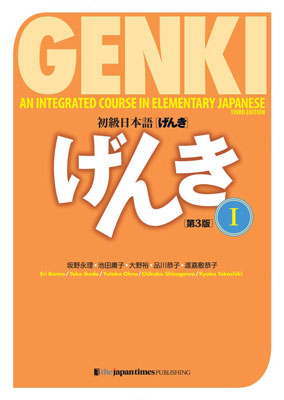
The original name of the book: ????? ??? I ??3??
Number of pages: 384 (+ 1 CD & study app)
Genki has been published by Japan Times publishers. This book is well written both in English and Japanese language. It is well-paced and quickly leaves away the romaji. It has plenty of vocabulary. The main differences between Genki I book from Minna no Nihongo book are- It includes all the main grammar, vocabulary, listening, and some exercises at the end of each chapter.
Genki I book has lots of information related to Japanese culture, daily conversations, and necessary real-life situational vocabulary. Also, the book includes an appendix with more practice and kanjis. You will need the Workbook too if you want to have all the needed content for study and also the Answer Key book. The only inconvenience is that it doesn’t include some important grammar points that you will need for the N5, those can be only found in the Genki II book. Although you can easily find them out there, it’s unfortunate that you need even more external resources. If you do not have a teacher to teach you the Japanese language and you want to do self-study in English, this book is highly recommended.
4 . Kanji Look and Learn
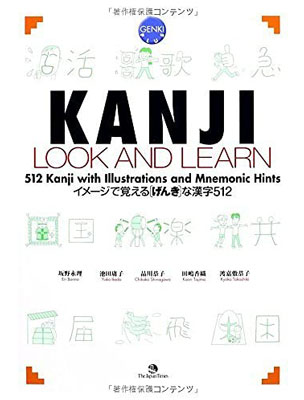
Kanji Look and learn book has 512 Kanji characters with Illustrations and Mnemonic (a method such as a pattern of letters, ideas, or associations that assists in remembering something) hints. Although you need to memorize 200 to 300 Kanjis for the JLPT N5 examination, however, you can study this book. Because this book has well-organized kanji and easy to remember methodology. If you can study the entire book, you can do well in the JLPT N4 exam too. You can easily learn the character shape and meaning of kanji using. There are several worlds for each kanji. Therefore, a total of about 3500 words are included in the essential vocabulary for beginners and intermediates using each kanji character.
Other features of this book:
- You can easily learn the shapes and meanings of Chinese characters with fun illustrations and stories.
- You can refer to basic information such as meaning, reading, number of strokes, and stroke order for each Chinese character at a glance.
- You can quickly find the Kanji character and vocabulary you want to look up using the various indexes at the end of the book.
- The number of recorded Kanji characters is 512. However, approximately 3500 words are included in the essential vocabulary for beginners and intermediates using each Chinese character.
- Covers all 3rd and 4th-grade Chinese characters (284 characters) based on the JLPT questioning criteria.
- Covers all 317 Chinese characters learned from “Genki book”.
- Includes a comparison table of learning Kanji characters for “Genki, book” “Minna no Nihongo book,” “Nakama book,” and “Welcome book”.
- If you use “Workbook” together, you can learn Kanji characters not only at the Kanji character and word level but also in sentences and sentences.
5. Kanji Tamago (Beginner)
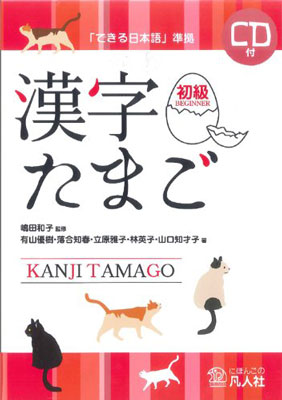
Tamago means egg. Kanji Tamago means the egg of Kanji. So, you can easily understand the content type of this book from the name of this book. This book is for beginner-level students of the Japanese language program. The book has very simple kanjis and also each stroke of the kanji has been explained clearly. In addition, there is enough space to write and practice the kanjis inside the book.
The Kanji Tamago book has been published by ???. This book was written with the idea of “What does it mean to be able to speak kanji characters?”
This text has three pillars: “It is clear what you can do”, “Learn from the contact scene of Kanji characters”, and “Learn the Kanji character learning strategy”. And, from those who are learning Kanji for the first time to those who have learned to some extent, both non-Kanji learners and Kanji learners can enjoy learning together.
6. Japanese Language Proficiency Test (JLPT) Official Questions book N5
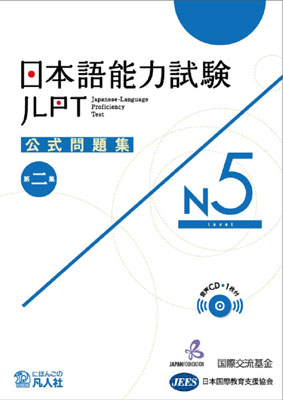
The JLPT is organized worldwide by two organizations. One is the Japan Foundation and another is Japan Educational Exchanges and Services (JEES). As you can see from the book name, this book is an official book published by those organizations. However, these books are not used to study the syllabus that will appear in the JLPT exam, but rather to study the previous year’s examination.
The Japanese Language Proficiency Test (JLPT) was revised in 2010. Therefore, this book contains questions that have appeared in the previous year’s examinations since 2010. It is a helpful book to check your preparation level and understand the pattern of the questions in the real examination.
We recommend buying this book in the middle of your preparation for the examination. You can practice the previous year’s exam questions papers and maintain the schedule for a better score in the real examination.
Conclusion
The information provided in this article has been published based on the personal reading experience and also feedback from several students. You can trust the content of this article. We have outlined the other information after analysis of the available data in different resources. Please let us know your reading experience of those books in the comment section below. To read more reviews on books you can check our books category on the Sakuron Japan website.
– Our editorial team reviewed this article and approved it according to our editorial policy.

